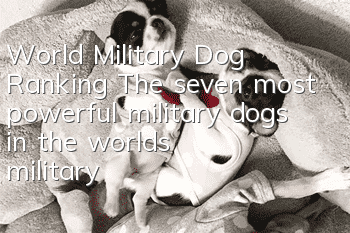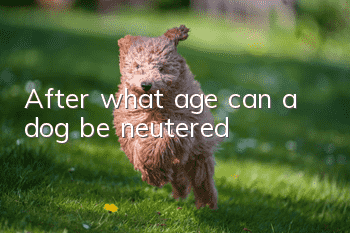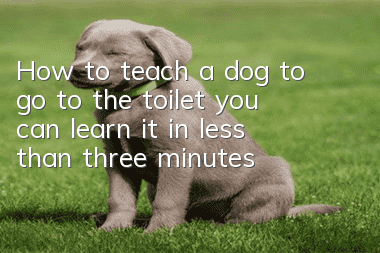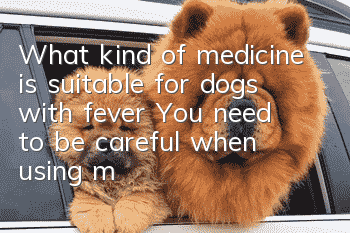World Military Dog Ranking The seven most powerful military dogs in the world’s military

War dogs are the collective name for dogs serving in the military. It is an animal with a high degree of neural activity. Its ability to distinguish odors is tens of thousands of times higher than that of humans. Its hearing can be 16 times that of humans. It has a wide field of vision, has low-light capabilities, and is good at observing things at night. After training, military dogs can undertake tasks such as tracking, identification, vigilance, guarding, patrolling, arresting, communicating, carrying bombs, detection, and searching for drugs and explosives. According to historical records, as early as 4600 BC, military dogs were used for hunting, warning and attacking enemies. Military dogs have become a military force with a special role. In 1949, the Chinese army began to establish a military dog breeding and training institution. It was originally built in Beijing. In the 1950s, it was divided into two military dog teams and moved to Heilongjiang and Kunming. By the early 1960s, each major military region had established military dog teams one after another, and a large number of military dogs had been bred and trained, playing an important role in national defense construction. In the mid-1980s, military dogs received new attention, and the Chinese military dog industry began to revitalize. At present, all major military regions, the Navy, the Air Force, the General Logistics Department, the General Armament Department, and the Armed Police have established military dog training bases. The entire military can breed and train more than 2,000 military dogs every year and send them to the troops. Most border defense companies, military warehouses, special police units, and security departments use military dogs. The key warehouses of the entire army basically use dogs to assist sentries. Today, nearly 10,000 military dogs are serving in the military, becoming a military force with a special role. ”
The number one military dog: German Shepherd
German Shepherd, also known as German Blackback (Bey), is also commonly known as German Wolfdog. This dog breed is said to be native to Germany. The only thing that can be confirmed is that in 1880, this dog had been fixed throughout Germany and used as a shepherd dog. They are agile and suitable for action-oriented work environments, and they are often deployed for a variety of tasks. Later, he was recruited by the German army during World War I and served as a military dog. After being cultivated by the German army, it was basically finalized. Because of their tall size, powerful appearance, and strong working ability, they are active around the world as military dogs, police dogs, search and rescue dogs, guide dogs, shepherd dogs, ornamental dogs, and domestic pet dogs.
The German Shepherd Dog is of medium size and slightly malleable; strong, with strong and developed German Shepherd muscles and strong bones; tight and harmonious throughout. Important proportion data The general view is that the height of male dogs is between 60 and 65 cm, and the height of female dogs is between 55 and 60 cm. The body length must exceed the body height, and the excess range is 10%-17%. Sheepdogs also have a history of being used in wars. During World War I, German Shepherds were sent to fight on the front lines; during World War II, Hitler ordered his army to recruit 200,000 Shepherds. These rigorously trained German Shepherds became victims of escorting explosives and Guard dogs in Nazi concentration camps. Later, after the Berlin Wall was built, it also served as the border between East and West Germany.defender.
The second military dog: The Rottweiler
The Rottweiler is one of the bravest and most powerful dog breeds in the world. This dog was once used to protect cattle and is an intelligent, strong, and approachable breed. Now in the field of police dogs, it has been widely praised and can also become a very precious domestic dog. The Rottweiler is an outstanding police dog capable of attacking intruders. In order for breeders to obey orders, breeders must undergo strict training. Rottweilers are naturally guarding dogs. In the Middle Ages, wealthy merchants hung their wallets around the necks of their Rottweilers to avoid having their money stolen. This dog has a calm personality and is very emotional. It can also be a family companion dog.
Head: medium length, broad skull, short and thick muzzle, quite bulging forehead, very dilated foreheads, and some dogs with wrinkles on the head. The head is of medium length and broad between the ears; the forehead is moderately arched in outline; the cheekbones are well arched with clear stops, and the upper and lower jaws are very strong. The forehead is dry, but some wrinkles appear when he is wary of a Rottweiler. The expression is noble, alert and confident.
The Rottweiler is smart and sensible, has a calm personality, and is absolutely loyal to its owner. It is good at distinguishing between good and evil, right from wrong, obeys commands, and obeys the owner's instructions. Rottweiler is tough, steady and confident. It likes to see its family all the time, so the Rottweiler will follow its owner and owner closely around the room. Rottweiler dogs are generally difficult to train. They must be trained strictly when they are puppies, otherwise it will be difficult for the owner to control them when they become adults. There have been records of Rottweiler dogs hurting people abroad. As long as you train it carefully, it can also be a quiet companion dog. Rottweilers get along well with children and love to play with them. Of course, this is determined by the child's personality and the dog's temperament, because the Rottweiler is very ferocious against malicious intruders and is particularly suitable as a guard dog.
Third military dog: Doberman
The Doberman is a medium-sized dog with simple body lines that gives people the first impression. The impression is that it has no muscles. The Doberman Pinscher is compact, muscular and chiseled. Inexperienced people tend to underestimate its weight of 6.80-9.07 kg. Although its weight is invisible at first glance. However, the Doberman's alertness, agility, muscle development and irritability are quite pronounced. The Doberman Pinscher is a very honest dog, like a well-trained athlete, with flexibility, agility and coordination. The Doberman Pinscher is born with a noble temperament. Doberman Pinschers are more aristocratic than other dogs.
The fur is mostly black, red, blue, and camel. It is accompanied by rust-colored markings with clear borders, distributed above the eyes, muzzle, throat, chest, lower parts of limbs, feet and tail. A small white patch on the chest is permitted. Height: 65-69 cm Weight: 30-40 catties Temperament: Bold and alert by nature, very patient. Smart, lively, alert, determined, alert, brave, loyal and obedient, loving. Properly trained and strictly managed,Can make an excellent guard dog and family companion dog. [Feeding requirements] Careful training and plenty of exercise. Origin: Germany, originated in the 19th century. Also known as Doberman Pinscher, it is mostly translated as Doberman Pinscher in China. The breed was developed by the German tax collector Ludwig Doberman and named after him. It's a great deterrent to thieves and robbers, but it also makes taxpayers resentful of its power. It is said that in the early 20th century, relevant documents recorded that in order to improve the appearance of the original Doberman, the bloodlines of the black and brown Manchester Terrier and the black English Greyhound were mixed; but it is believed that two other German breeds, the old German Shepherd and the German Flat Dog It once played a major role in the ancestral breeding lineage of the Doberman dog. Later, Weimaraner blood was added.
The fourth military dog: Belgian Shepherd
The Belgian Shepherd Dog (English name: Belgian Shepherd Dog) is a multi-talented dog that is slightly smaller than the German Shepherd Dog. An intelligent and easy-to-train dog breed, its appearance is beautiful, strong, flexible and muscular, alert and energetic, brave, and never tired, allowing it to engage in different tasks. Folk dog lovers also keep Groanda dogs as leisure and sports pets. There are four different types of Belgian Shepherd Dogs, namely the short-haired type (Belgian Malinois), the black long-haired type (Belgian Groander), the mixed-colored long-haired type (Belgian Tembilen) and the wire-haired type ( Belgian Lachanos Sheepdog).
Although the dog is called a shepherd, it has various abilities. Because it is very smart and easy to train, the male dog is 60 cm to 66 cm; the female dog is 56 cm to 62 cm. Weight: 28kg to 35kg.
According to the history and origin of the Belgian Shepherd Dog, the Malinois is a type of Belgian Shepherd Dog. Therefore, the Belgian Shepherd Dog does not only refer to the Malinois, nor does it only refer to the Belgian Groenendael. A relatively unified view is that the Belgian Shepherd Dog was formed by shepherds crossing the Mastiff from Central Europe or the local area with the Deerhound introduced from Britain in the 13th century. Before the 19th century, many breeds closely related to shepherd dogs existed in Belgium. Before the beginning of the 20th century, Belgian Shepherd Dogs were widely used to guard sheep around Belgium. Now they are mainly used in the military and police circles, or for personal protection.
The fifth military dog: Chinese Kunming Dog
The Kunming Dog is a dog breed independently bred by the Kunming Police Dog Base of the Ministry of Public Security. There are three color strains: black back, grass yellow and wolf green. Breeding began in 1953 and was successfully bred in 1964. In 1991, it won the second prize of the National Science and Technology Progress Award and the third prize of the Military Science and Technology Progress Award. The seventh-generation Kunming dog successfully bred in 2005 is the only independent dog in China.Intellectual property rights for military and police work dogs have been widely promoted and used in 31 provinces, municipalities, autonomous regions and Southeast Asian countries, achieving significant military, social and economic benefits and filling the gap of China being unable to breed fine breed dogs on its own. . Because they were bred in Kunming, the southwest corner of the motherland, they are called "Kunming dogs". Kunming dogs are also used as police dogs and are an excellent domestic dog breed. Kunming dogs have strong adaptability to plateau climate, severe cold environment and high temperature. In our country's military and public security criminal investigation fronts, it is widely used in border patrols, reconnaissance and solving crimes, and the detection of drugs and explosives. It can also be used as a guard dog for units and individuals. It is adaptable to various climates, especially plateau three-dimensional climate, and has its own characteristics in identifying, tracking and biting.
The Chinese Kunming Dog is medium in size, symmetrical and slightly square in shape. The head is wedge-shaped with clear outline, straight nose bridge, erect ears, straight back and waist, close to the recommended height, chest depth less than half the body height, contracted abdomen with smaller abdominal circumference, sword-shaped or hook-shaped tail, short hair, Blue, black and yellow. -Brown mark. Males are 61-70cm tall, 66-76cm tall, and weigh 28-40kg; females are 58-66cm tall, 65-74cm tall, and weigh 26-36kg.
The Kunming Dog is the first excellent working dog successfully bred in my country. It is of medium size, well-proportioned, slightly square, with shoulder height approximately equal to body height, thin skin, short coat, tight bone structure, and compact body. , well-developed muscles, strong joints, relatively upright hind limbs, and agile movement; good working performance, strong fecundity, genetic stability, strong adaptability, and strong disease resistance. Nervous types are mainly active and excitable. They are bold and ferocious, have strong active defense, high alertness, strong search reflex, are excited about objects, have strong desire to pick up things, are loyal to their owners, have good attachment and obedience, and have good concentration. concentrated. It is adapted to relatively intensive work and has relatively strong endurance. It is not suitable for families to keep this kind of dog in captivity, and it is not suitable for novices either.
The sixth military dog: Labrador Retriever
The Labrador Retriever (abbreviated as Labrador) is a medium-to-large dog with a natural With a gentle personality, lively, non-aggressive and high IQ, it is a dog breed suitable for being selected as a guide dog or other working dog. It is one of the three non-aggressive dog breeds along with golden retrievers and huskies. The fur is short, with a straight and tight outer layer and an inner layer of fur that is soft, waterproof and cold-proof. The otter-like webs between the toes make them very suitable for swimming. There are three standard colors of Labrador: black , yellow, chocolate.
The joint is slightly short; body length (the distance from the shoulder joint to the end of the croup) is slightly greater than the height at the withers (the vertical distance from the withers to the ground). The distance from the elbow to the ground is equal to half the height at the shoulders. The chest extends to the elbows but is not very impressive. The body must be of sufficient length to permit a straight, free and efficient stride; but it must never be short in outline and too long in body, or tall and spindly in the legs. Physique: The overall proportion of physique and bone mass is evensay. Labrador Retrievers must show muscularity for working conditions and must not be excessively fat. The ratio of body length to shoulder height is approximately 12:11.
Service dogs are mainly used to assist people with disabilities who have limited mobility. They can help people pull wheelchairs, open doors for Labrador retrievers, turn lights on and off, pick up items, etc. These dogs usually carry a backpack containing the daily necessities of their owner. They can go shopping with their owners in the supermarket, put the products they want into the shopping cart, and help their owners take things out and put them away after returning home. This kind of service dog can serve almost everything, from pressing the elevator to being in any wheelchair. He can help take things that the owner cannot reach, providing the best service for the disabled. There is a strong connection between service dogs and their owners, and the help they bring to people is immeasurable. Because they improve the inconvenience of life for people with disabilities, they can go out of the house to enjoy life outdoors and increase their awareness of life. confidence.
The seventh military dog: Caucasian dog
The Caucasian dog is a powerful athletic dog. It arrived in the former East Germany in the 1960s and was used as a border patrol dog, particularly along the Berlin Wall. In 1989, when the Berlin Wall was torn down, 7,000 powerful patrol dogs were disbanded. Many Caucasian dogs were given to ordinary German families. Meticulous breeding in Germany ensured the future of this cautious and independent dog. As it became more popular, breeders paid more attention to selecting their docile character. The Caucasian dog is one of the largest fierce dogs in the world. Although this dog is extremely ferocious, it is very loyal to its owner and likes to be close to its owner. Currently, it is mostly used for livestock care and security.
The Caucasian dog is a powerful, athletic dog with strong muscles, well-developed and well-proportioned bones. Body length slightly longer than shoulder height. It has a huge wedge-shaped head, which tapers from the head to the end of the muzzle, and is blunt at the end. It has high-hanging ears, which are sometimes cropped. Its eyes are deep-set and almond-shaped. The thick tail points toward the hocks and is curled up in a sickle shape or rolled into a circle when excited or in motion. Its body hair comes in three lengths, but all are two-layered and very dense. Coat colors include agouti shades of banded gray, fawn and reddish as well as their gradient colors. There are often white patches and a very dark mask. Sometimes individuals with black spots on white background appear. This breed requires clear gender characteristics. Males are required to be larger and stronger; females can be smaller and lighter in body structure. Scars that appear at work do not affect the overall appearance. The head is huge, with a wide skull and well-developed cheek bones. Viewed from above, the tapering skull and muzzle join together to form a blunt wedge shape. The boundary between the forehead segments is not obvious, and the width of the head is not highlighted. Instead, the thick hair distributed on both sides of the head highlights the broad head. The male's head is thicker and more graceful than the female's. Caucasian dog
Before the end of the Cold War, it was not known to the Western dog world. Nomadic tribes stayed in remote areas of the Caucasus.This kind of working dog was brought, and with a little outside genetic interference, this working dog evolved into the modern Caucasian dog, a rare and precious dog breed in our time. The name of this dog breed comes not only from its place of origin, but also from the purpose of this dog's existence. The Caucasus refers to the region that includes Georgia, Armenia, Azerbaijan, Daganstan, Iran and Turkey. Ovtcharka is a Russian word that translates to shepherd dog. Unlike ordinary herding dogs, the Caucasus is essentially a livestock guard dog. The purpose of this breed is to be inseparable from the herd and effectively defend against predators - whether wolves, bears or thieves.
The seven most powerful military dogs in the world have dedicated their strength to the country and rushed to the battlefield with invincible bravery.
- When should puppies be vaccinated?
- How to keep your pet dog healthy
- How to choose dog food for senior dogs
- Instructions and precautions for using external insect repellent drops for dogs
- My puppy seems to have something in his throat and keeps retching. What's going on?
- What are the symptoms of puppy poisoning?
- What should you do if your dog has bad breath?
- Dog vaccination reactions
- How to treat dogs vomiting bloody mucus
- How much water do dogs need every day?



